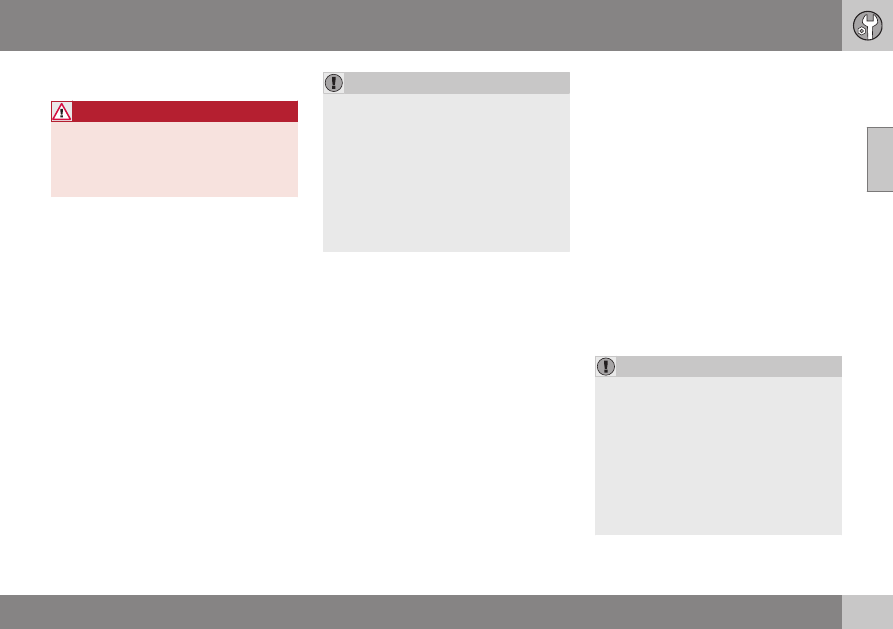Volvo V60 Plug-in Hybrid (2015 year). Instruction - part 23

10 Maintenance and service
10
}}
387
Testing the brakes
WARNING
Always test the brakes after washing the
car, including the parking brake, to ensure
that moisture and corrosion do not attack
the brake linings and reduce braking per-
formance.
Lightly depress the brake pedal now and then
when driving long distances in rain or slush.
The heat from the friction causes the brake
linings to warm up and dry. Do the same
thing after starting in very damp or cold
weather.
Exterior plastic, rubber and trim
components
A special cleaning agent available from Volvo
dealers is recommended for the cleaning and
care of coloured plastic parts, rubber and trim
components, such as glossy trim mouldings.
When using such a cleaning agent the
instructions must be followed carefully.
Avoid waxing and polishing on plastic and
rubber.
When using degreasant on plastic and
rubber, only rub with light pressure if it is
necessary. Use a soft washing sponge.
Polishing glossy trim mouldings could
wear away or damage the glossy surface
layer.
Polishing agent that contains abrasive
must not be used.
Rims
Only use rim cleaning agent recommended
by Volvo.
Strong rim cleaning agents can damage the
surface and cause stains on chrome-plated
aluminium rims.
Related information
•
•
Cleaning the interior (p. 389)
•
Water and dirt-repellent coating (p. 388)
Polishing and waxing
Polish and wax the car if the paintwork is dull
or to give the paintwork extra protection.
The car does not need to be polished until it
is at least one year old. However, the car can
be waxed during this time. Do not polish or
wax the car in direct sunlight.
Wash and dry the car thoroughly before you
begin polishing or waxing. Clean off asphalt
and tar stains using tar remover or white spi-
rit. More stubborn stains can be removed
using fine rubbing paste designed for car
paintwork.
Polish first with a polish and then wax with
liquid or solid wax. Follow the instructions on
the packaging carefully. Many preparations
contain both polish and wax.
Avoid waxing and polishing on plastic and
rubber.
When using degreasant on plastic and
rubber, only rub with light pressure if it is
necessary. Use a soft washing sponge.
Polishing glossy trim mouldings could
wear away or damage the glossy surface
layer.
Polishing agent that contains abrasive
must not be used.